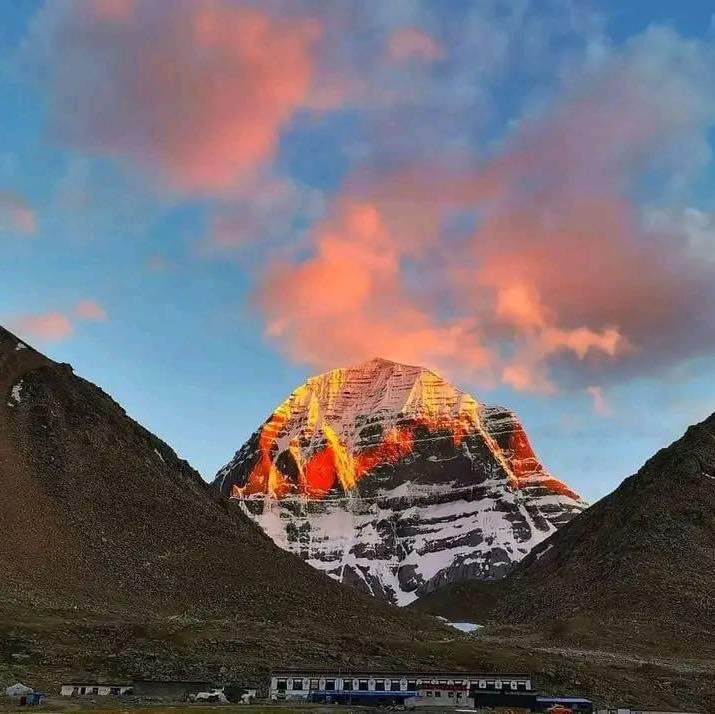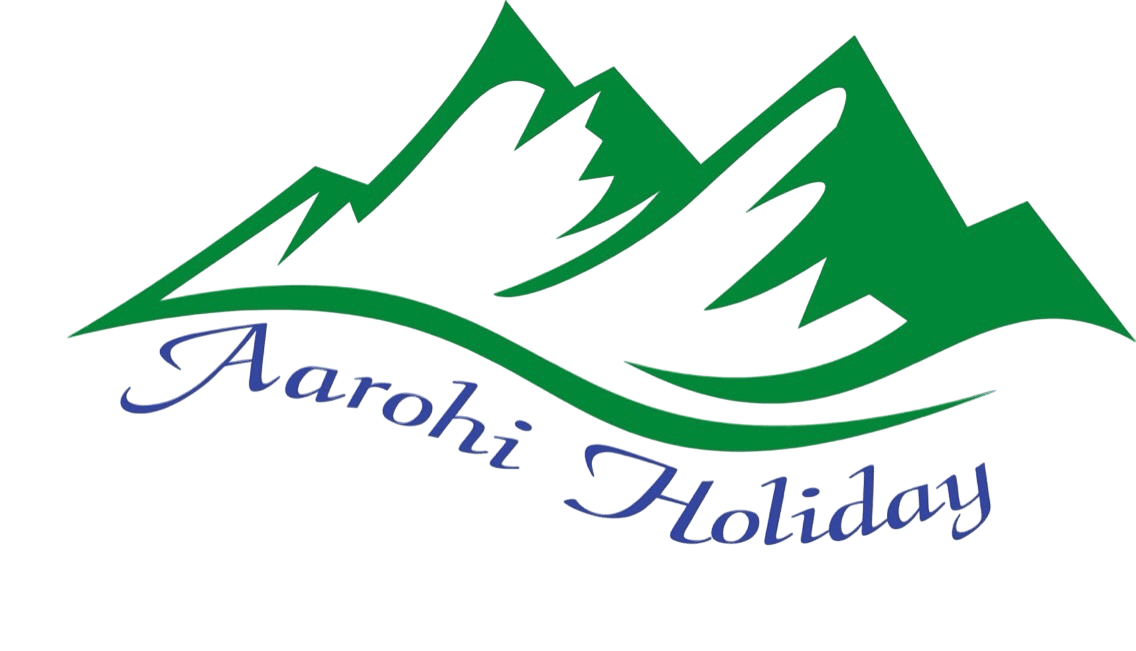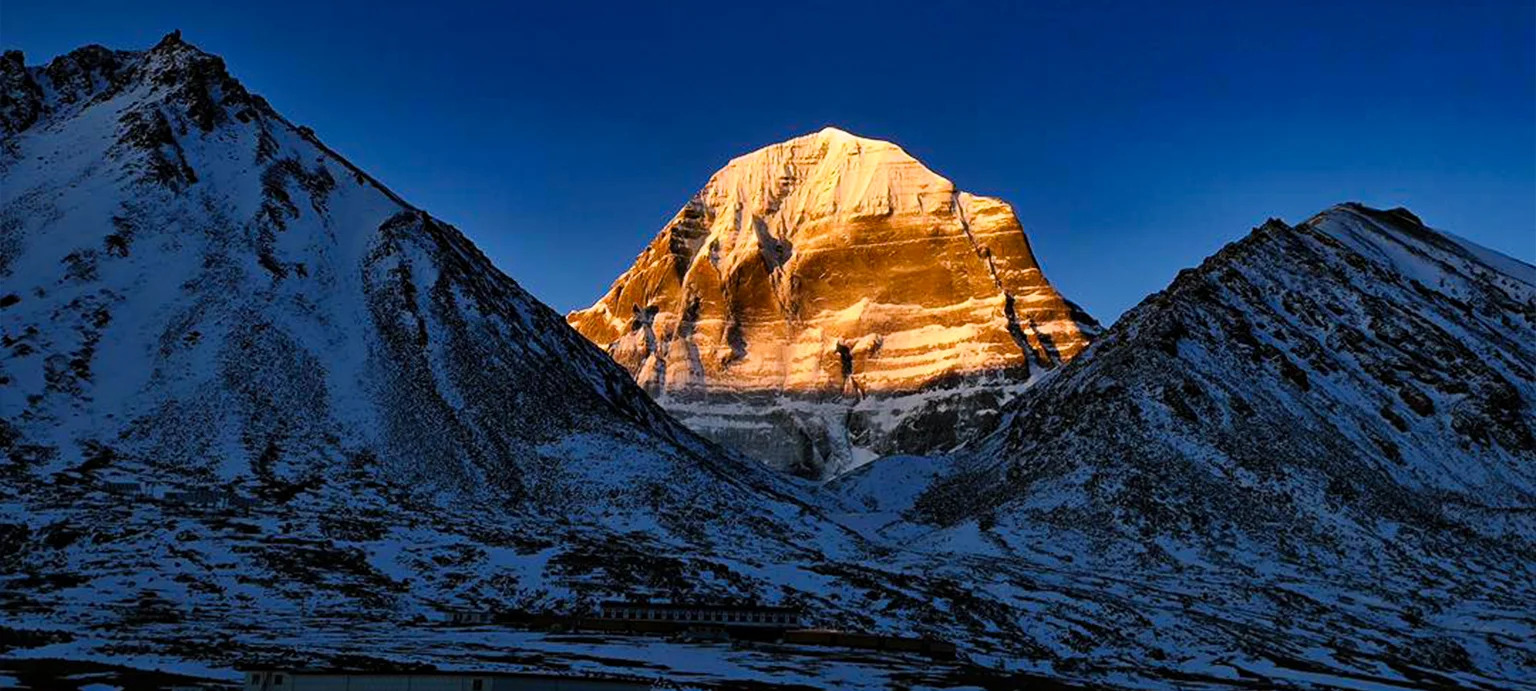Kailash Mansarovar Yatra Overview
Kailash Mansarovar Yatra is the journey from Kathmandu to Mount Kailash (6,638 m). It holds deep spiritual significance for Hindus, Bons, Buddhists, and Jains alike. Revered as the ultimate pilgrimage destination, Mount Kailash is a sacred site where souls worldwide seek spiritual enlightenment and connection.
This sacred mountain is not only a place of profound devotion but is also believed to be the divine abode of Lord Shiva, often referred to as “The God of all Gods” in Hinduism. Additionally, Lake Manasarovar, located in close proximity to Mount Kailash, is considered the embodiment of Brahma’s essence in Hindu beliefs, further enhancing the spiritual aura of this sacred region.
Over the span of 15 days, the Kailash Mansarovar yatra begins with a tour of Kathmandu, where you can visit its famous temples like Pashupati Nath Temple, Boudhanath, Soyambhunath and, on the third day, Budhalikantha Temple. At Aarohi Holiday, we ensure your tour is safe, comfortable, and filled with amazing memories. Join us on this incredible journey of Kailash Mansarovar Yatra. Aarohi Holiday is always ready and helpful in guiding you, offering excellent and unforgettable memories with the awesome trekking experience of Kailash Mansarovar Yatra.
Route to Kailash Mansarovar Yatra

Your journey begins in Kathmandu, where our team will welcome you and transfer you to your hotel. After exploring UNESCO World Heritage Sites, a day is set aside for preparation before driving to Syabrubesi near the Nepal–China border. From here, we continue to Kerung, where we rest and acclimatize to the altitude.
The drive then takes us across vast plateaus and valleys to Saga, and onward to the holy Lake Mansarovar. Here, pilgrims take part in puja rituals before continuing to Darchen, the starting point of the Kailash Kora. The three-day circumambulation begins with a drive to Tarboche and a trek to Dirapuk, offering the first close views of Mount Kailash.
On the second day, the trek crosses the challenging Drolma La Pass at 5,630 meters, the highest point of the Yatra, before descending to Zuthulpuk. The final day of the Kora completes the circuit back to Darchen, followed by a return drive to Saga and Kerung. From Kerung, we make our way back to Kathmandu, where the journey concludes with unforgettable memories of this sacred pilgrimage.
Why Choose Us for Your Kailash Mansarovar Yatra
Embark on the sacred journey to Mount Kailash and Lake Mansarovar with us. With years of experience in Nepal, Tibet, and Bhutan, we make your Yatra safe, meaningful, and well-organized.
- Local Expertise: Based in Kathmandu, we have strong connections in both Nepal and Tibet. This allows us to handle logistics smoothly and ensure reliable arrangements throughout the journey.
- Spiritual and Cultural Guidance: From Pashupatinath Temple in Nepal to the sacred Lake Mansarovar and Mount Kailash in Tibet, we provide deeper understanding of the religious and cultural significance of every stop.
- Skilled and Caring Guides: Our Nepali and Tibetan guides are not only experienced but also attentive to the needs of pilgrims, offering both practical support and spiritual encouragement.
- Well-Planned Itineraries: Our routes combine flights, road travel, and where needed, helicopter transfers to make the pilgrimage more comfortable and time-efficient.
- Focus on Safety: We take altitude seriously and plan acclimatization days into the itinerary. Our staff are first-aid trained and always ready to assist if needed.
- Personalized Attention: Whether you are traveling as a solo pilgrim, with family, or in a group, we provide tailored services so every participant feels supported throughout the Yatra.
- Responsible Tourism: By working with local communities, we ensure that our trips support livelihoods and respect the traditions of the regions we travel through.
- Choose our Kailash Mansarovar Yatra for a journey where your spiritual goals are supported by thoughtful planning, reliable service, and genuine care.
Kailash Mansarovar Yatra-2026/27 Group & Private Options Available
Join us on the sacred pilgrimage to Mount Kailash and Lake Mansarovar, revered by Hindus, Buddhists, Jains, and Bon devotees. This journey combines flights, road travel, and scenic overland drives across the Tibetan plateau, giving you the chance to visit Pashupatinath Temple in Kathmandu, perform holy rituals at Lake Mansarovar, and complete the Kora around Mount Kailash. Known for its spiritual power, this Yatra is believed to cleanse sins and offer blessings of liberation.
We provide both fixed group departures and private tour options. Group tours usually have 10 to 25 participants, creating a devotional atmosphere where pilgrims share the journey together. For those seeking flexibility and personalized attention, private tours are ideal for families, couples, or smaller groups.
Bookings for 2026 are open, and we encourage early reservations for 2027 to secure your place on this once-in-a-lifetime pilgrimage.
Alternative Kailash Mansarovar Yatra
Looking for alternatives to the classic Yatra? The Mt. Kailash Tour by Hilsa (11 days) offers a quicker route to Lake Mansarovar and Mount Kailash, while the Tibet Tour (9 days) explores Lhasa, Gyantse, and Shigatse with monasteries and stunning landscapes. Each journey is unique, and we’ll help you choose the one that suits you best.


